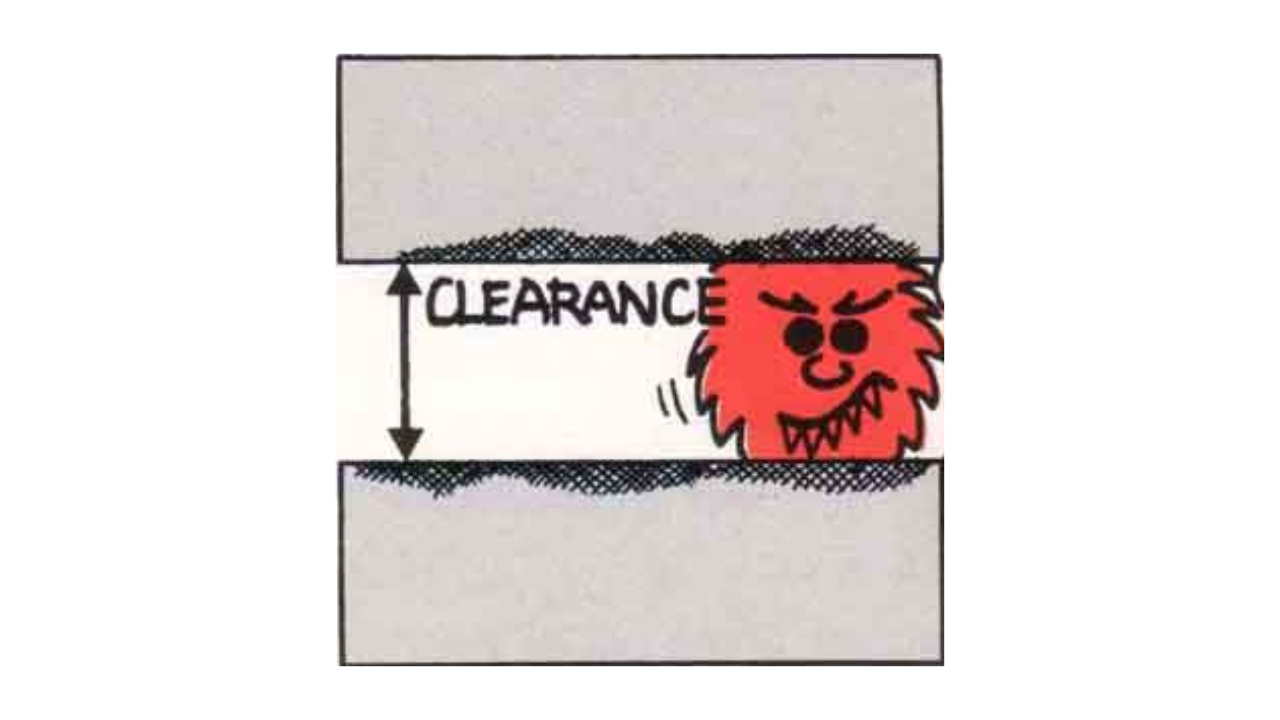The Top 10 Reasons Why Root Cause Analysis Sucks in the United States
Mike Micklewright, from Quality Digest magazine. www.quality-digest.com
Lately, I’ve been asked to provide root cause analysis training more than ever before in my 14 years as an independent quality/lean consultant. This is interesting in the age of Six Sigma, especially because “analyze” is the heart of DMAIC (define, measure, analyze, improve, control). I find this interesting in this age of lean, in which the lean tools that are taught to so many people are only possible solutions to good root cause analysis.
I further find this interesting in this age of so many companies being ISO 9001-certified for many years, when the essence of continually improving the effectiveness of the quality management system is good root cause analysis.
I began to wonder, “Why does root cause analysis suck?,” and I came up with the following possible root causes. You decide which apply to your company by asking “Why?” somewhere around five times until you find the systemic reason(s) that root cause analysis sucks at your company. Drum roll, please . . .
Why Root Cause Analysis Sucks
10. It’s more fun to blame people.
For some, there’s no greater thrill than to find out who caused the problem and blame them, even though that person had no control over the situation. The situation is also easy to rectify, because all one has to do is to counsel, retrain, talk to, and convince them that they need to pay more attention, or better yet, fire their butt. Fixing the system is way too boring anyway.
9. Top managers don’t want to find out they are to blame.
What if Dr. Deming was right? What if 90 percent of root causes are due to common cause variation and that only top management can control this type of variation? What if employees all understood what Deming was really telling us? Then top management would have to attend root cause analysis training along with other supporting functions (i.e. sales, engineering, production planning). Leadership might even have to change, and that would be absurd. It’s easier to send only manufacturing personnel to training and make them feel they are root causes and ensure that they fear making another mistake.
8. I was told to shut-up after asking “Why?” one time.
Children naturally ask why, and sometimes they ask too many questions, so it’s best to shut ’em up now before parents have to admit that they don’t know the answer to a question and before the kid gets too comfortable asking “Why?” multiple times.
Example:
Five-year-old: “Daddy, why do we have to die?”
Daddy: “So we can go to heaven.”
Five-year-old: “Why do we have to go to heaven?”
Daddy: “So we can live with God and other good people like us forever.”
Five-year-old: “Why do we have to live with God?”
Daddy: “Shut up, kid, and go watch TV.”
This Dad allowed way too many “whys.” He’s inexperienced and will learn to shut the kid up after one “why,” thus properly preparing the kid for the world of work.
7. We don’t have time to think long-term right now.
“Maybe next month. Right now, we’ve got to make the numbers for the quarterly report. The shareholders, Wall Street, or the owners must see that we met their predictions this quarter, or else. We want all our people focused on making as much product as possible, shipping as much as possible during the last week of the month, and storing as much inventory as possible before the end of the year. We’ll get to root cause analysis next month, or next year, and really resolve the problems.” They never do.
6. Fixing root causes is too expensive.
Example: The Washington Monument was deteriorating. Why? Use of harsh chemicals. Why? To clean up after pigeons. Why so many pigeons? They eat spiders, and there are a lot of spiders at the monument. Why so many spiders? They eat gnats, and there are lots of gnats at the monument. Why so many gnats? They are attracted to the light at dusk. Why are the lights on at dusk? Because the timing of the lights doesn’t change with the seasons. Solution: Automate. Turn on the lights at a later time for now, and develop a system that self-adjusts throughout the year. In the above example, one would normally stop asking “why” when the answer was “harsh chemicals,” and one solution may have been to use milder chemicals more often. Expenses would have gone up. When getting to the root cause, the solution needs to save money. This less expensive result is typical for monuments and your operations as well. This is not the perception of the majority of leaders.
5) “My peeps can’t do this, and I’m a micromanager.
“And yet, I don’t have the time to do this the right way, so I better not encourage root cause analysis at all. I would rather give them the fish than teach them to fish. I’ve made it this far, because I’m smart. My peeps obviously aren’t smart and they need me. I love to get my hands into everything and even though this slows up decision making, we’re assured of the right answers, and this is best in the long run, right? Leadership and coaching are over-rated. They’re opposite to micromanaging, and they don’t work.”
4. It requires thinking.
Who needs to think when they’ve got their Master Blaster Double-Thick Wide Black Belt, the title of sensei, and they and their company are certified? We’re in a competitive world in which quick movement and decisions are most important. Thinking is for the professors at a university, where nothing real ever gets accomplished anyway. We need to get product out the door now. I only think, I think, when I’m in the classroom.
3. Why do root cause analysis training? We can buy the solutions anyway!
It’s much easier to buy 5S (sort, straighten, shine, standardize, and sustain), value-stream mapping, kaizen, TPM (total productive maintenance), quick changeover, all of the Six Sigma tools, and an ISO 9001 certificate than to go through the hassle of determining root causes. Tools like 5S are only byproducts, developed by Toyota after doing proper root cause analysis. No one taught Toyota how to do 5S. What came first, root cause analysis or 5S? Root cause analysis of course. One day there was a product defect. Someone went to ask the operator what happened. The operator said the defect occurred because he used the wrong tool. Why? Because the right tool wasn’t available. Why? Because it couldn’t be found in the unorganized work area. Why? Because there wasn’t an identified spot for that tool. Solution: Organize the area and develop a system for organization—thus the origin of 5S. If a company wishes to copy Toyota, they should copy how Toyota did root cause analysis, not 5S. That company may come up with a different “tool” or methodology. Thomas Jefferson once said, “Be flexible in style, but unwavering like a rock, in principles.” Root cause analysis is the principle; 5S is the style. Top managers would rather buy solutions than develop their own.
2. We don’t practice it at home. Why should we do it at work?
More than 25 percent of our children are on antipsychotic drugs, antidepressants, Ritalin, and other ADHD (attention deficit hyperactivity disorder) drugs under the banner of “mental health.” Anti-anxiety drugs are rampant, and there has never been any proof that they have ever cured anyone of anxiety. To quit smoking, we can chew gum, buy a patch, get hypnotized, or take drugs. To lose weight we can go on a myriad of diets, some claiming exercise isn’t necessary, or we can get our stomachs stapled. To get us out of an economic slump, our government issues us checks. If our marriage is in disarray, we get a divorce. If we don’t get along with other countries, we go to war. We rarely get to root causes at home, in our neighborhood, or in our country. We aren’t accustomed to it. So we go for the quick fix, the new drug. This gets carried over to work and we continue to buy the latest drug at work—ISO 9001, Six Sigma, lean tools, and products from India and China.
1. Getting to root causes would require us to work with other kingdoms.
When one asks “Why?” so many times, the systemic reason as to why a problem exists will more than likely exist in the confines of another kingdom or department. This would require true process orientation or value-stream management. Most companies don’t have this; they talk of this only during an audit, a kaizen event, or a Six Sigma project. Most companies’ dominant structure is based on kingdoms, no matter what they say. Most have departmental goals and are evaluated on meeting these goals, so they continue to sub-optimize, no matter what the effect is on other kingdoms. This makes root cause analysis even more difficult, if not impossible. It’s easier to blame another department rather than to dig deeper into the root cause with a kingdom that cannot stand the other kingdom. It’s easier to fight. It’s best to discover the root causes of why root cause analysis sucks at your company before conducting more training! Good luck!
Mike Micklewright is president of QualityQuest Inc., a Chicago-based consulting, training, and facilitation company specializing in lean, ISO 9001, ISO/TS 16949, Six Sigma, and their integration. Micklewright is an ASQ-certified Six Sigma Black Belt, quality auditor, quality engineer, and quality manager. He holds a degree in general engineering from the University of Illinois and has worked in design, manufacturing, and quality engineering for the Saturn Corp. of General Motors and Seaquist Perfect Dispensing.
Related Articles
Analyzing Semiconductor Failure

Improvement: What Comes First?

An Integrated Process for System Maintenance, Fault Diagnosis and Support

Anatomy of a Boiler Failure—A Different Perspective

Anatomy of a Hydraulic Pump Failure

Are We Willing to Hear What “Failure” Has to Say?




